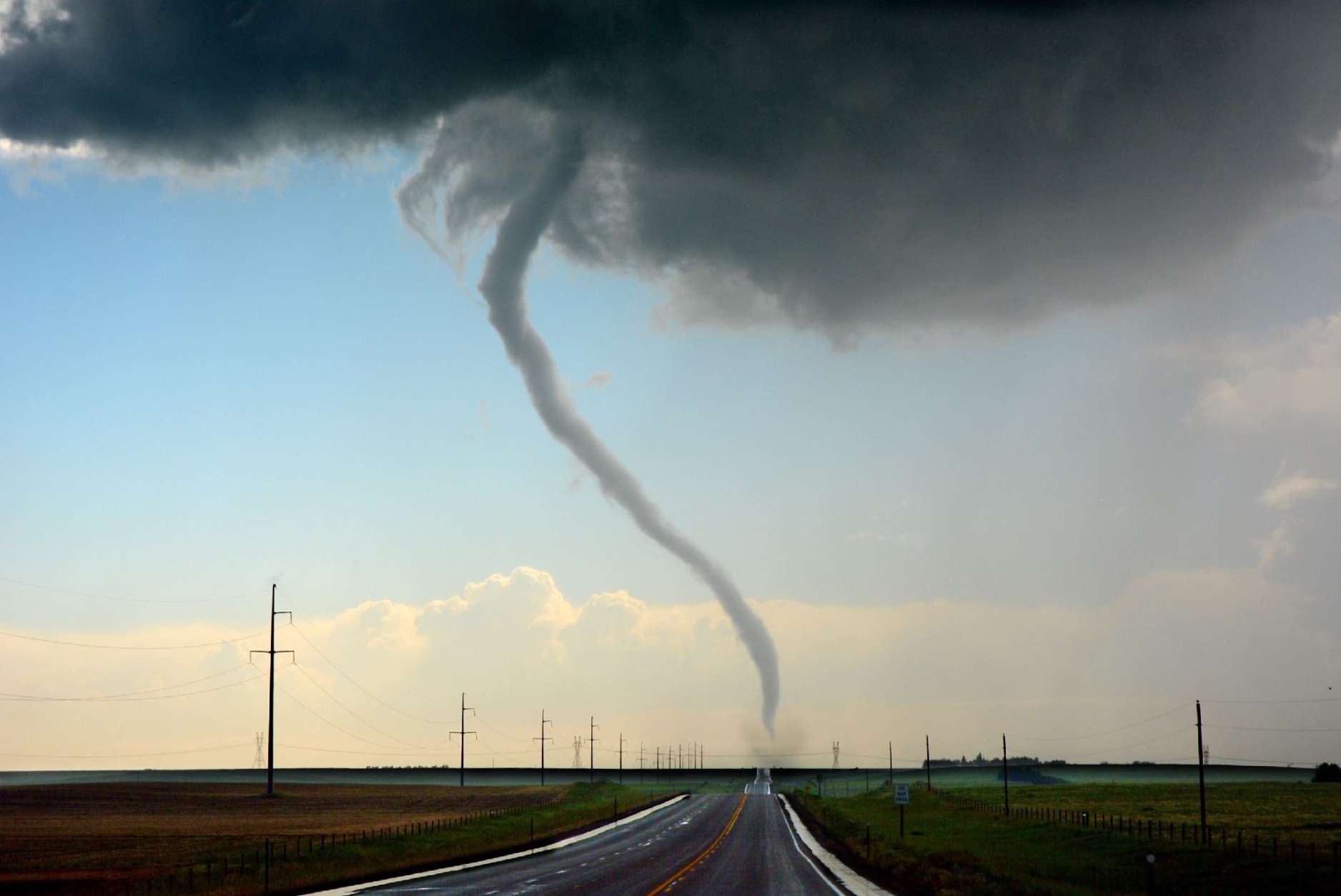Possible Tornado Formation and Characteristics

Posibilidad de tornado – Tornadoes are violent, rotating columns of air that extend from the base of a thunderstorm cloud to the ground. They are formed when warm, moist air from the Gulf of Mexico meets cold, dry air from the north. The warm air rises, creating an updraft. As the updraft increases in speed, it begins to rotate. The rotation is caused by the Coriolis effect, which is a force that deflects moving objects to the right in the Northern Hemisphere and to the left in the Southern Hemisphere.
Types of Tornadoes
There are many different types of tornadoes, but the most common type is the supercell tornado. Supercell tornadoes are typically large and long-lived, and they can cause extensive damage. Other types of tornadoes include waterspouts, which form over water, and landspouts, which form over land.
El pronóstico indica una posibilidad de tornado en las próximas horas. Para obtener actualizaciones en tiempo real, consulta hurricane beryl live. La situación está en constante evolución, así que mantente informado y toma las precauciones necesarias para protegerte del posible tornado.
Factors that Influence Tornado Intensity and Longevity
The intensity of a tornado is determined by a number of factors, including the strength of the updraft, the amount of moisture in the air, and the wind shear. Wind shear is the difference in wind speed and direction between the surface of the earth and the top of the thunderstorm cloud. Tornadoes with strong updrafts, high moisture content, and high wind shear are typically more intense and longer-lived than tornadoes with weak updrafts, low moisture content, and low wind shear.
La posibilidad de un tornado acecha en el horizonte, su potencial destructivo es un recordatorio de la fuerza de la naturaleza. Sin embargo, podemos prepararnos rastreando su trayectoria con herramientas como el rastreador de la trayectoria del huracán Beryl.
Al estar informados y vigilantes, podemos mitigar los riesgos y protegernos de la furia de los tornados.
Tornado Detection and Warning Systems: Posibilidad De Tornado
Early detection and warning are crucial in mitigating the devastating impact of tornadoes. Advancements in technology have significantly enhanced our ability to identify and track these storms, providing valuable lead time for communities to take protective measures.
Detection Methods
- Radar: Doppler weather radars emit pulses of electromagnetic energy that bounce off objects in their path. By analyzing the Doppler shift in the reflected signals, meteorologists can determine the velocity and direction of wind within the storm, allowing them to identify areas of rotation that may lead to tornado formation.
- Satellite Imagery: Satellite images can provide valuable information about the structure and evolution of storm systems. By tracking the movement of cloud formations and observing the development of certain cloud patterns, meteorologists can identify areas with a high potential for tornado development.
- Storm Spotters: Trained volunteers and trained meteorologists often deploy into the field during severe weather events to observe and report on storm activity. They can provide real-time information on tornado sightings and relay critical data to weather forecasters.
Warning Systems
When a tornado is detected or suspected, weather authorities issue various types of warnings to alert the public:
- Tornado Watch: Indicates that conditions are favorable for tornado development in a specific area. It advises people to stay informed and be prepared to take shelter if necessary.
- Tornado Warning: Issued when a tornado has been spotted or is indicated by radar. It urges immediate action, such as seeking shelter in a designated safe place.
The effectiveness of tornado warnings depends on several factors, including the accuracy of detection systems, the timeliness of warnings, and public awareness and response. Education and outreach programs are essential in ensuring that communities understand the risks and know how to stay safe when tornadoes threaten.
Tornado Safety and Mitigation

Tornadoes are unpredictable and potentially devastating, but there are steps you can take to stay safe during a tornado warning. The key is to be prepared and know what to do when a tornado strikes.
Tornado Safety Guidelines, Posibilidad de tornado
* Seek shelter immediately in a sturdy building or underground structure.
* If you are in a mobile home, evacuate immediately and seek shelter in a nearby building.
* If you are outdoors, lie flat in a ditch or other low-lying area and cover your head with your hands.
* Stay away from windows and doors, as they can shatter and cause injury.
* If you are in a car, pull over to the side of the road and stay inside. Cover your head with your hands and wait out the storm.
Tornado Shelters
* Above-ground safe rooms: These are specially designed rooms that are built to withstand the force of a tornado. They are typically made of reinforced concrete or steel and have a small footprint, making them suitable for homes and businesses.
* Underground shelters: These are bunkers that are built below ground level. They are more expensive to build than above-ground safe rooms, but they offer the best protection from tornadoes.
* Storm cellars: These are underground rooms that are typically used for storage. They can provide some protection from tornadoes, but they are not as strong as above-ground safe rooms or underground shelters.
Building Codes and Land-Use Planning
* Building codes can help to mitigate tornado damage by requiring buildings to be constructed with stronger materials and wind-resistant features.
* Land-use planning can also help to reduce tornado damage by limiting development in areas that are prone to tornadoes.